How Did America's Expanding Consumer Culture Change Women's Lives
Hulton Athenaeum // Getty Images
25 ways American life dramatically changed during the Roaring '20s
The 1920s in the United States are remembered as a decade of excess, freedom, prosperity, and progress. On a social and cultural level, women were liberated in means they never had been in American life earlier. The thought that women should be covered, chaste, and traditionally feminine at all times was rapidly discarded in favor of shorter hemlines, cropped hair, and the freedom to trip the light fantastic toe the Charleston by themselves rather than wait for a partner to waltz with. That freedom extended to politics, equally women gained the right to vote at the beginning of the decade—equality in one realm translating into equality in another.
Fine art had once been seen as the domain of a privileged few, but with the introduction of "talking pictures" (film), radio, and jazz, art was attainable to more people than always, and was created by more than people than ever, with women, African Americans, and immigrants making significant contributions, or, in the case of jazz, leading the vanguard.
But America wasn't all freedom and fun in the 1920s. The decade opened with the introduction of an amendment to the U.South. Constitution outlawing alcohol (repealed in a subsequent amendment) and although this did non stop many Americans from drinking, it did serve to set the tone from the federal government. Commerce began to play an e'er-creeping role in the lives of Americans, with companies reforming their wages, benefits, and working atmospheric condition to entice workers to go out unions and choose to trust them instead. At the aforementioned fourth dimension, mass advertizement and the introduction of credit and layaway convinced more than Americans than ever to part with their cash, creating a consumer society that continues to this day.
Indeed, many of the changes that swept through American life in the 1920s have endured, from car ownership to nightclubs. Stacker took a await at 25 of the nigh pregnant means in which American life changed during the Roaring '20s, before the decade's optimism and prosperity came a sobering halt with a cataclysmic financial crash in 1929—the beginning of the Great Depression.
You may also like: What the world was like when grandparents were born
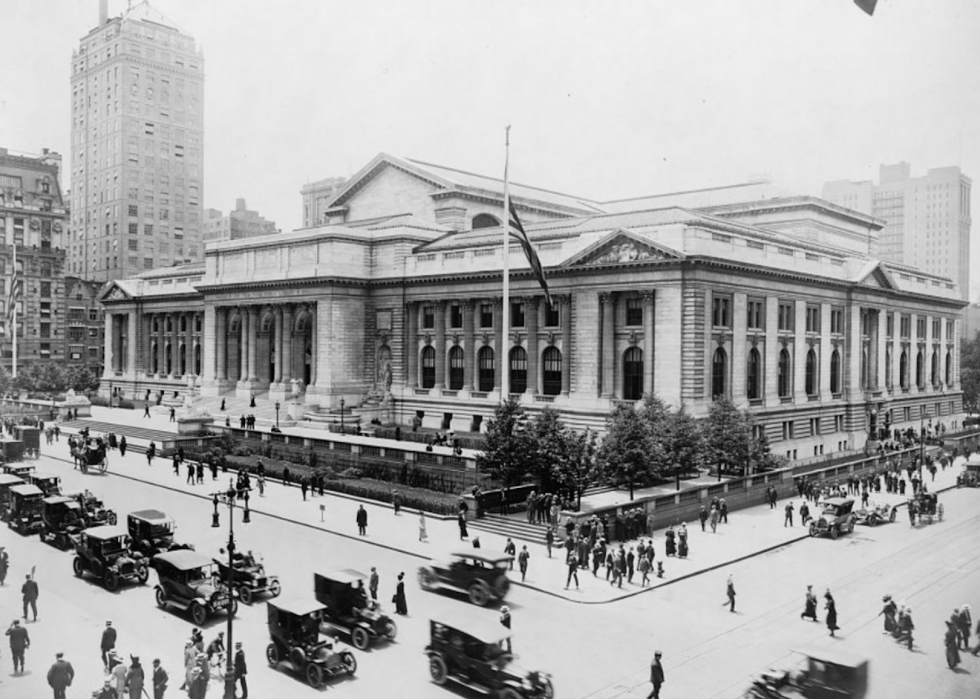
1 / 25
Americans leave farms in favor of cities
Thomas Jefferson wrote that the United States was a nation of "yeoman farmers," but by the 1920s, more than Americans lived in cities than on farms for the first time. The reason for the shift was an industrial nail, responsible for a rapid rise in manufacturing and factories, along with recent waves of immigration to cities from various parts of Europe. The preponderance of Americans living in cities has never reverted back to farms.
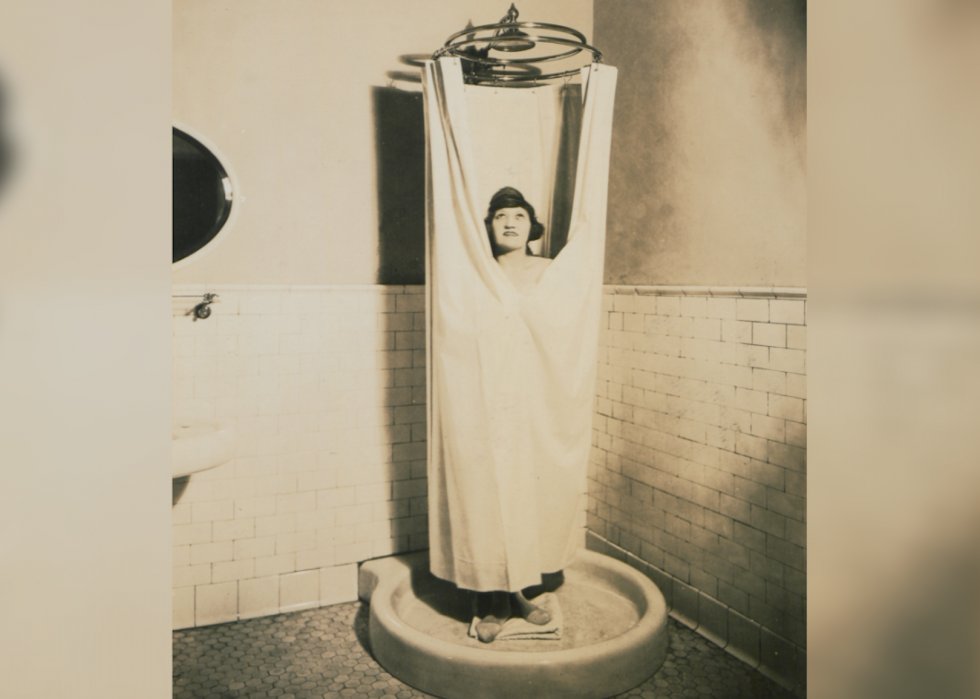
2 / 25
William Stairs, Son, and Morrow // Wikimedia Eatables
Indoor plumbing and sewer systems became common
Before the 1920s, most Americans were resigned to heading to the outhouse or to using a bedroom pot, and washing weekly in a tub filled manually with water. But in the 1920s, most new home construction included at least one bathroom and indoor plumbing.
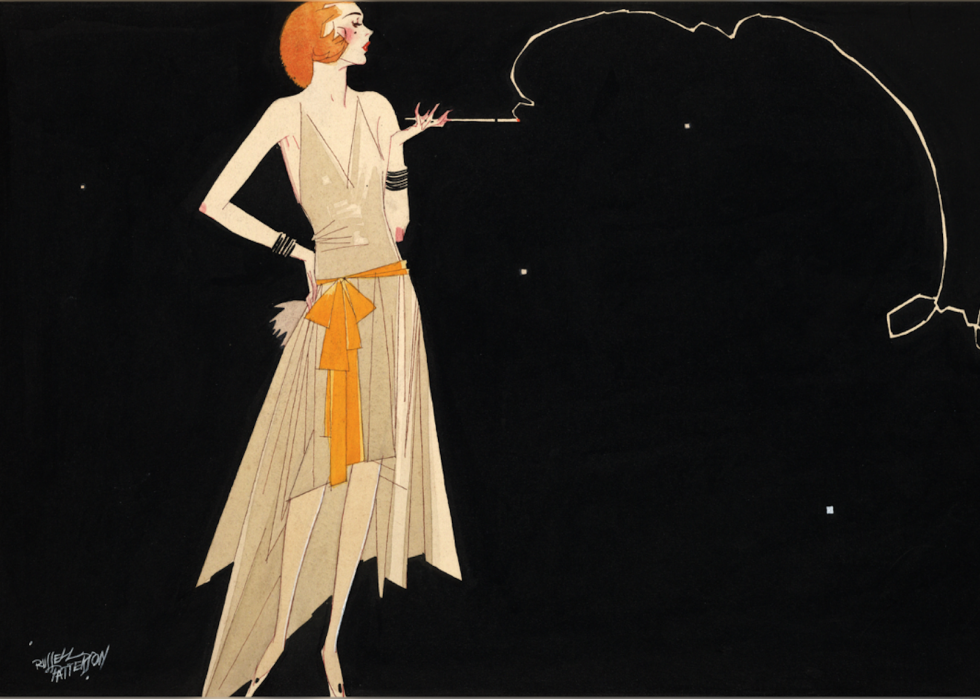
3 / 25
Russell Patterson/Library of Congress // Wikimedia Eatables
The loosening of the corset
Later on centuries of confining their waists in tight corsets to give the appearance of a small silhouette, American women began finally ditching their corsets in the 1920s. The shift was because of a number of factors, including the influx of women into the workforce in the post-World State of war I years, and dramatically new silhouettes, including the famously straight and loose flapper dresses, and the relaxed and boxy designs of Coco Chanel.
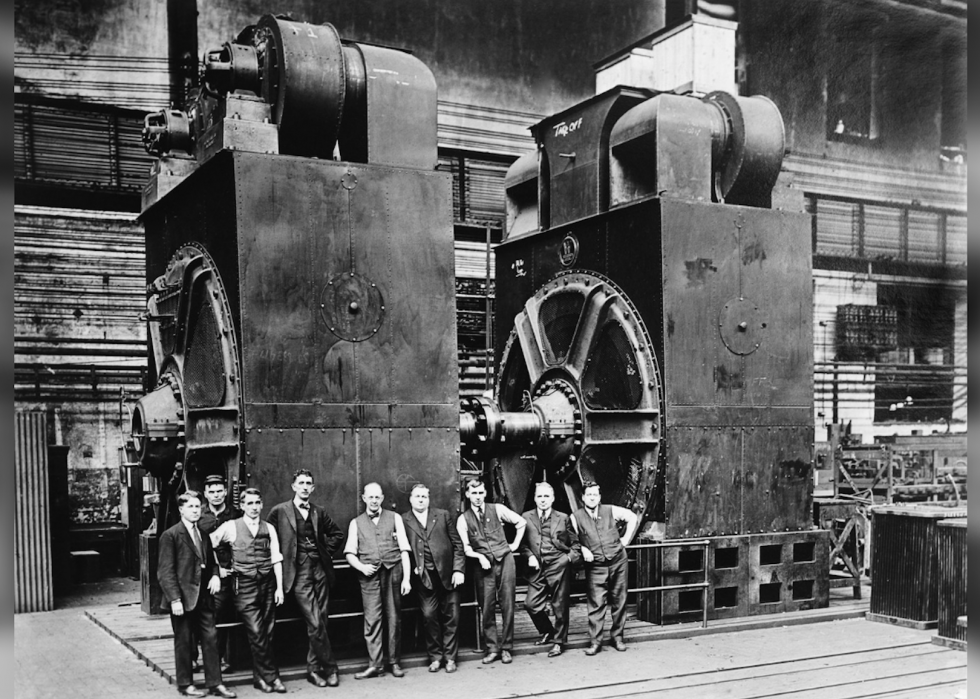
4 / 25
Everett Historical // Shutterstock
The electrification of America
At the start of the 1920s, just 35% of American households had electricity. By the end of the decade, that figure would achieve a whopping 68%; 85% of Americans living on farms were counted out of the tally. The influx of electricity into American life changed it forever, shifting hours later every bit people were able to work into the night more easily, and slashing the number of fires from kerosene lamps and candles.
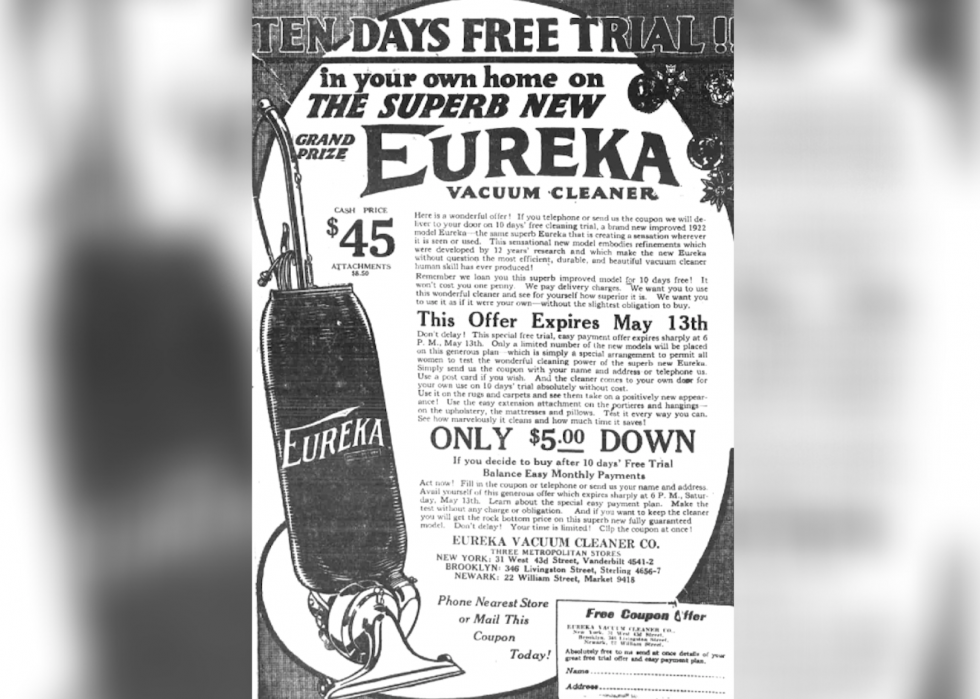
5 / 25
Eureka Vacuum Co./Library of Congress // Wikimedia Eatables
Appliances brand housework easier
Cleaning a rug was a complicated affair before the 1920s. Rugs would have to be taken outside and beaten—a chore requiring considerable time, and often more than one person—or taken to a professional. Only in 1924, a Swedish inventor introduced the vacuum cleaner to America, transforming the manner people cleaned rugs and floors.
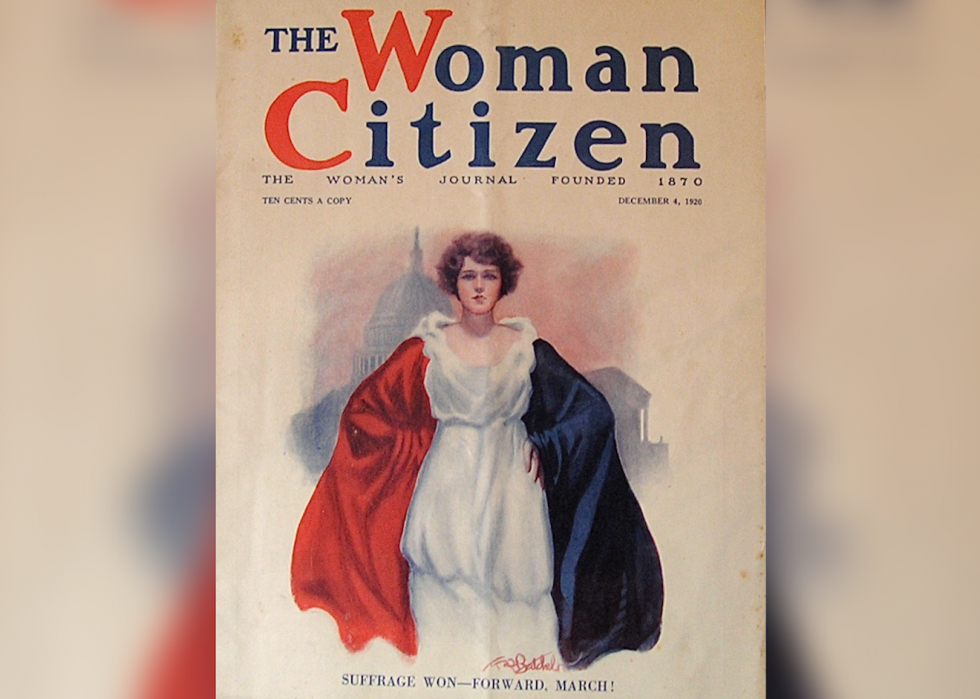
6 / 25
PDUS // Wikimedia Commons
Women's win the right to vote
Earlier the 1920s, only American men could vote. The face of U.S. politics changed forever on Aug. 18, 1920, when the 19th Subpoena to the U.S. Constitution was ratified, giving American women the right to vote. In Nov that year, more than viii meg American women voted for the first time in national elections. Mississippi was the last state to ratify the 19th Subpoena, which it finally did in 1984.
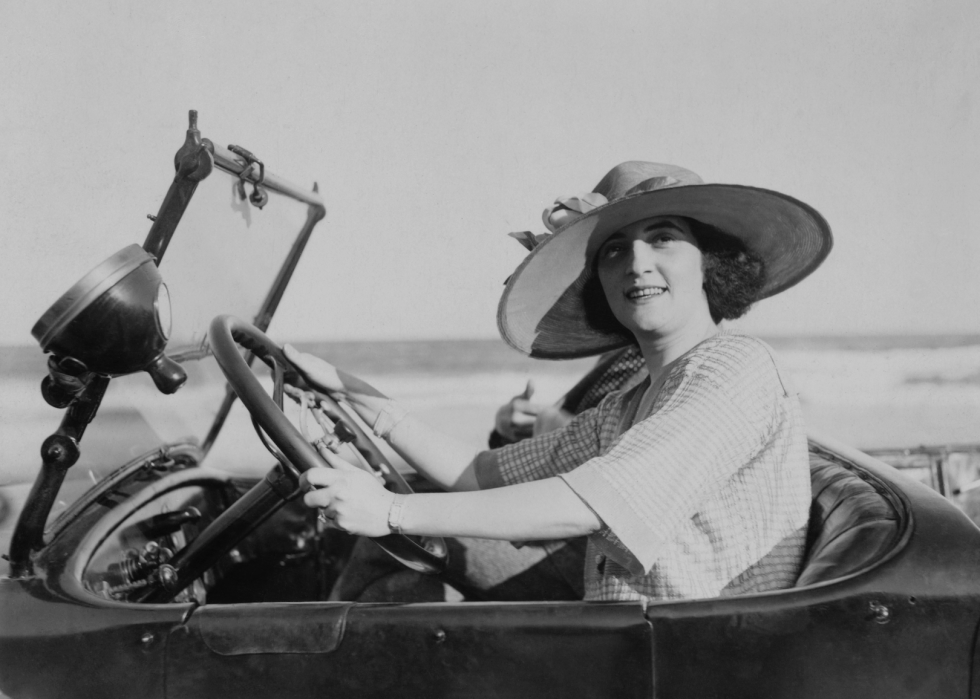
seven / 25
Everett Historical // Shutterstock
Americans accept to car ownership
In the 1920s, cars became affordable enough for the average family to consider owning one, and American life was forever transformed. Before the 1920s, cars were so expensive that only the wealthy—or devoted hobbyists—could own them. But in the 1920s, manufacturers figured out how to produce cars more cheaply, and suddenly, cars became a mass consumer adept. The flooding of cars into the market place did more than go far quicker for people to get from bespeak A to betoken B. Information technology besides led to the paving of roads, the construction of bridges and tunnels, and the sprouting of gas stations on the corner.
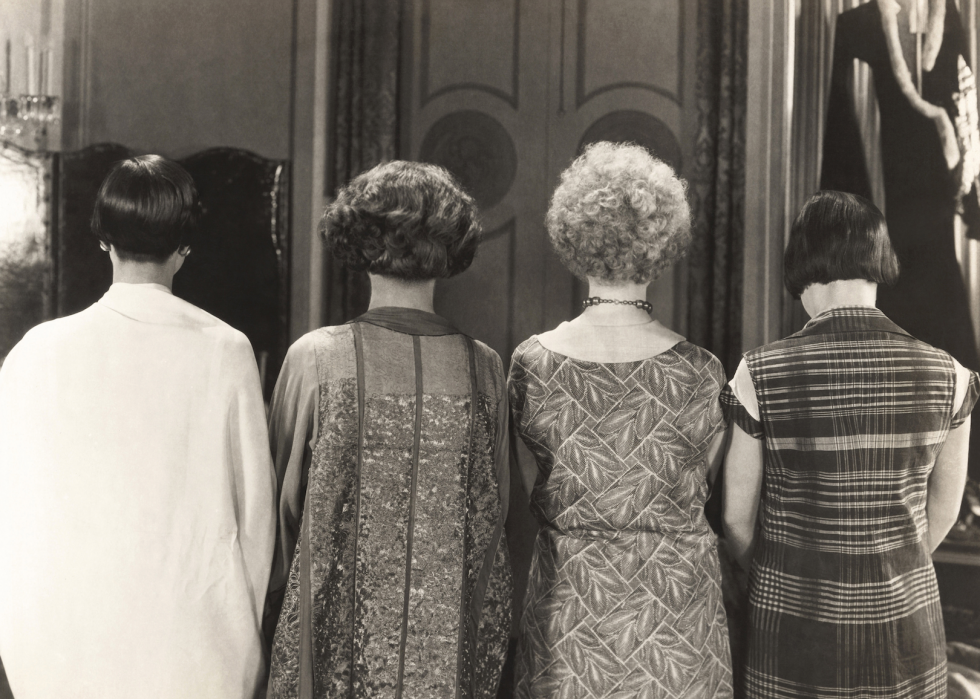
8 / 25
Everett Historical // Shutterstock
Bernice (and others) bob their hair
The bob—a short, direct, boyish haircut—became the indisputably most stylish hairstyle for women in the 1920s. Before the decade began, near women had long hair, which could exist quite time-consuming to pin upwards, launder, and style. Chopping their hair off into a bob made it almost maintenance-free, which gave women back time and freedom. The haircut was such a symbol of the decade that one of its most famous writers, F. Scott Fitzgerald, commemorated it in one of his curt stories, "Bernice Bobs Her Hair."
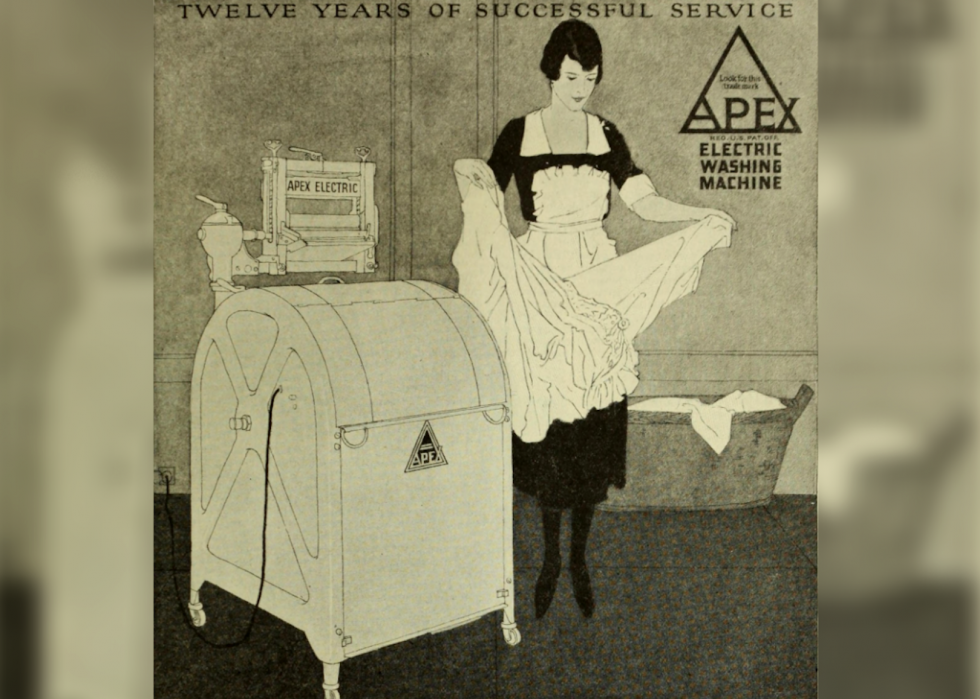
9 / 25
The Sat Evening Post/Internet Book Archive Images // Wikimedia Eatables
Washing machine
For American housewives before the 1920s, unabridged Mondays had long been devoted to washing the family laundry—by manus. Merely with the popularization of the washing automobile and its spread into many homes in the 1920s, American women found themselves freed from the demand to spend so much time on this task, and had time for other pursuits.
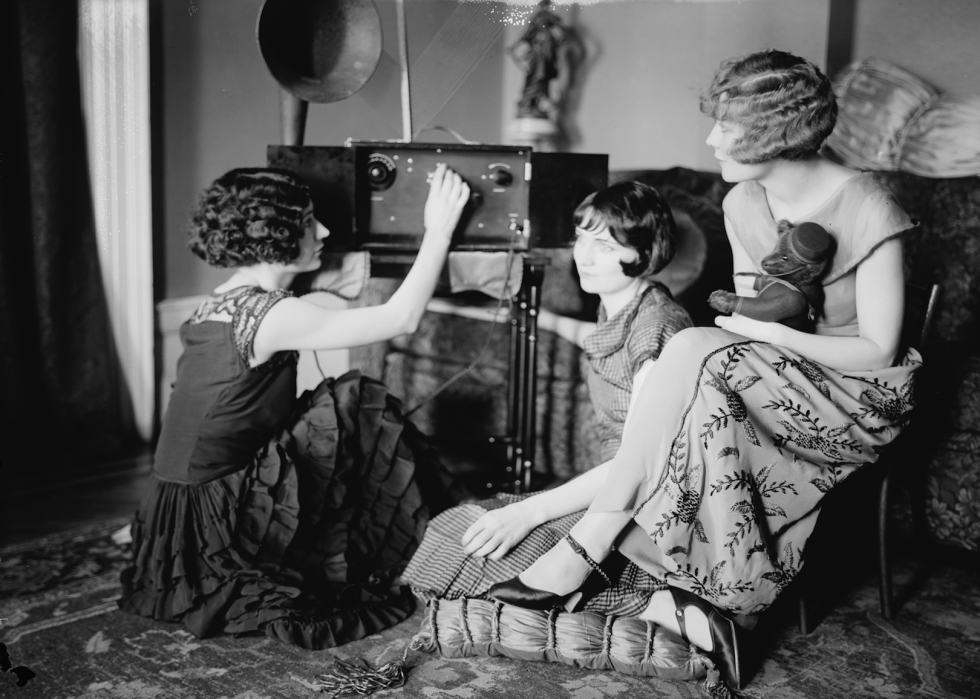
10 / 25
Bain News Service/Library of Congress // Wikimedia Eatables
The radio connects America to the world
The radio became the media channel of choice for many Americans during the 1920s, threatening the dominance of the daily newspaper as a chief source of news. When the radio was introduced to the mass market in 1920, demand for it surged, overwhelming manufacturers. Betwixt 1923 and 1930, 60% of American households purchased radios, enthralled by the ability to hear the voices of politicians, public figures they might take only read about earlier, and to hear live music.
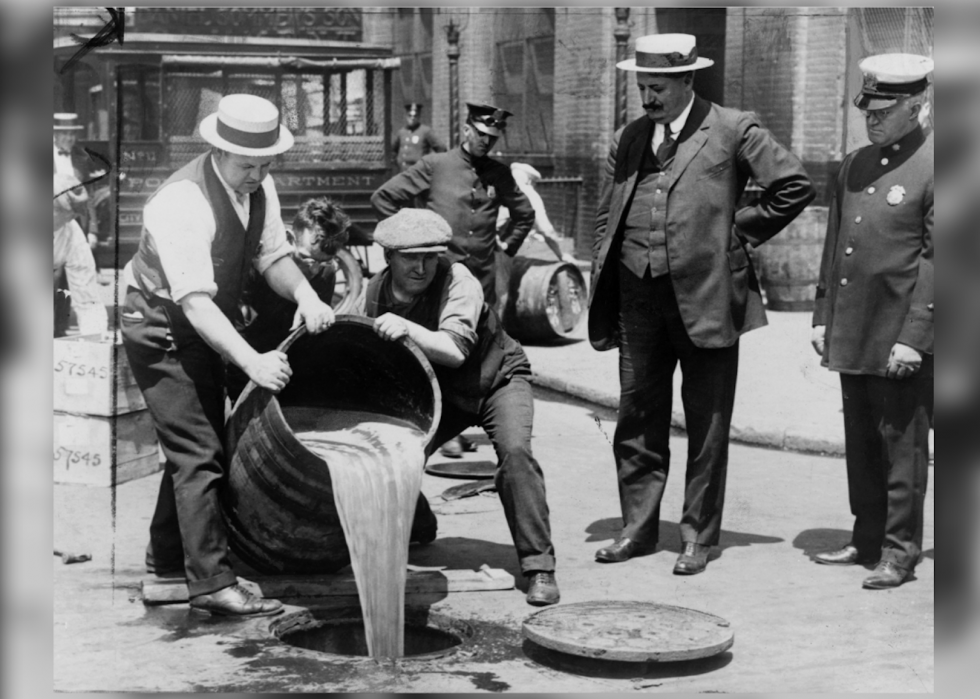
11 / 25
Library of Congress // Wikimedia Commons
A prohibition in proper noun only
The 18th Amendment to the U.S. Constitution was passed in 1920, prohibiting the sale, manufacture, or consumption of alcohol in the United States. Although the law was unequivocal, this did non stop many Americans from imbibing. To indulge in this suddenly illicit action, Americans set up speakeasies in place of bars, requiring patrons to pass through storefronts or restaurants selling legal goods to reach the spirits, wine, and beer. Although prohibition was repealed in 1933, the clandestine fun of the speakeasy has made it an enduring model for American bars.
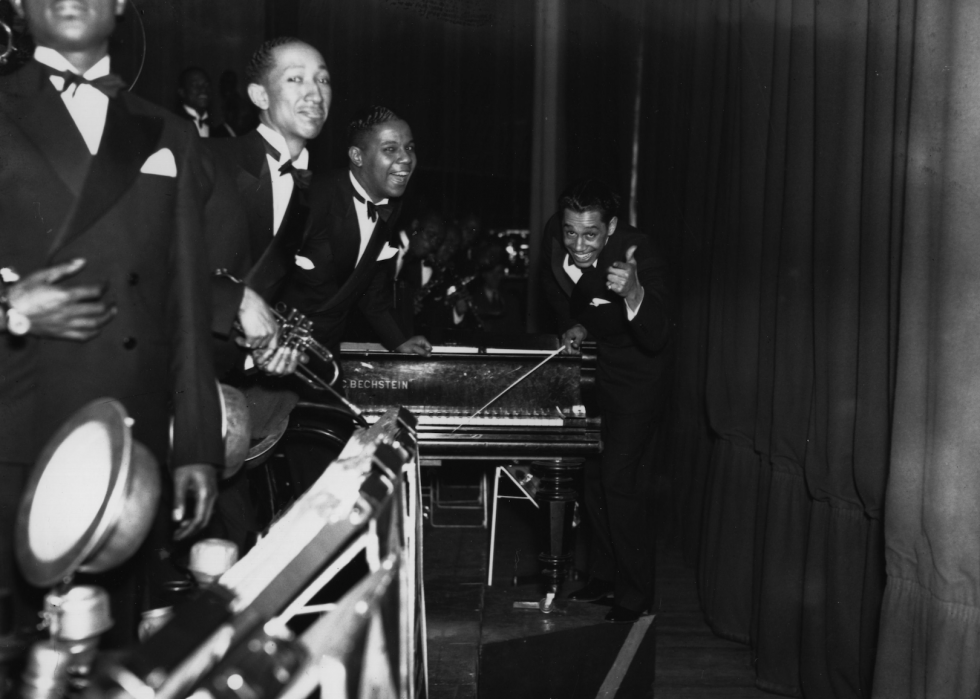
12 / 25
Pull a fast one on Photos // Getty Images
Jazz goes mainstream
In 1922, trumpet player Louis Armstrong began improvising during his shows, calculation musical flourishes and variations that would go the hallmark of the musical mode known as jazz. The joy and the mournfulness in jazz were a natural response to the difficult times endured past Americans during the World War I, to those who had been lost, and to an appreciation for life of those who lived. Jazz became so popular during the 1920s that the phrase "Jazz Age" has go a metonym for the entire decade.
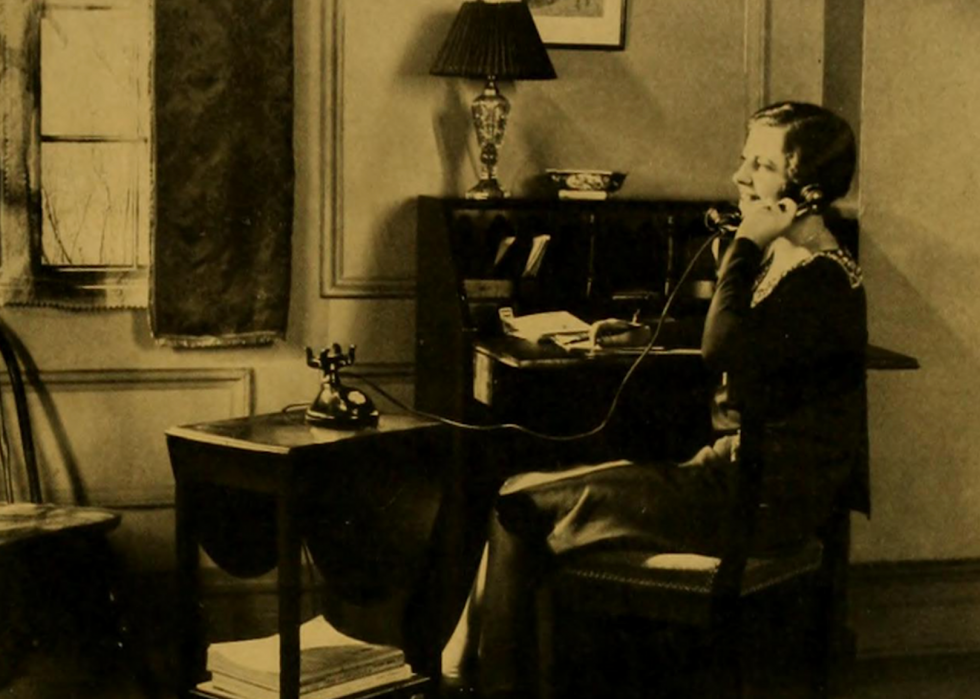
13 / 25
American Telephone and Telegraph Company // Wikimedia Commons
Telephones
Before the 1920s, virtually Americans relied on postal postal service service to communicate important news with one another and stay in touch. Merely over the class of the decade, the telephone would become the main way that Americans made social and professional contacts with i another. For decades, until the advent of e-mail, the telephone was central for Americans to communicate when they could non be face up to face.
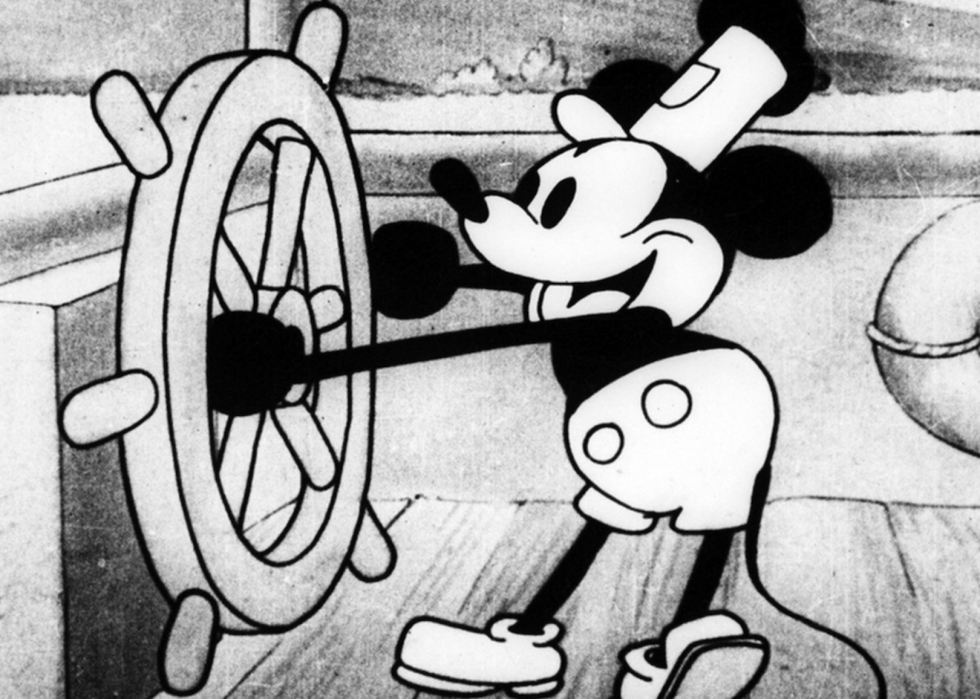
14 / 25
The pictures start to talk
Although film had been effectually for years earlier the 1920s, it wasn't until the first "talking picture" was released in 1927 that films of the sort we would recognize today were built-in. Audiences were awed past the film—appropriately titled "The Jazz Singer"—which would change the way Americans consumed entertainment forever. But a year later on, a company called Disney introduced Americans to an onscreen talking mouse who would redefine entertainment for children, every bit well.
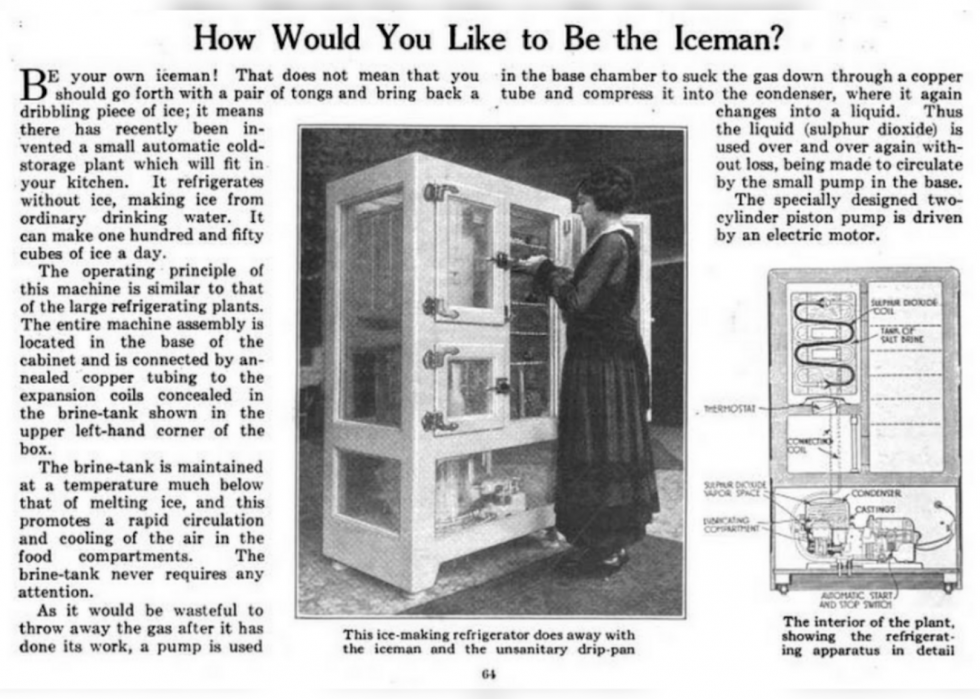
xv / 25
Modern Publishing Visitor // Wikimedia Commons
Americans keep their nutrient absurd
If yous had a nutrient staple or a dish y'all wanted to proceed cool before the 1920s, yous had improve hope you lot had a cool cellar and a way to reliably freeze water ice. Just General Electric changed that in 1927 when it introduced the first electric refrigerator for consumer households. Suddenly, grocery shopping didn't need to happen every day, and families could store perishable items in the common cold box to keep them fresh longer, forever transforming cooking and repast time.
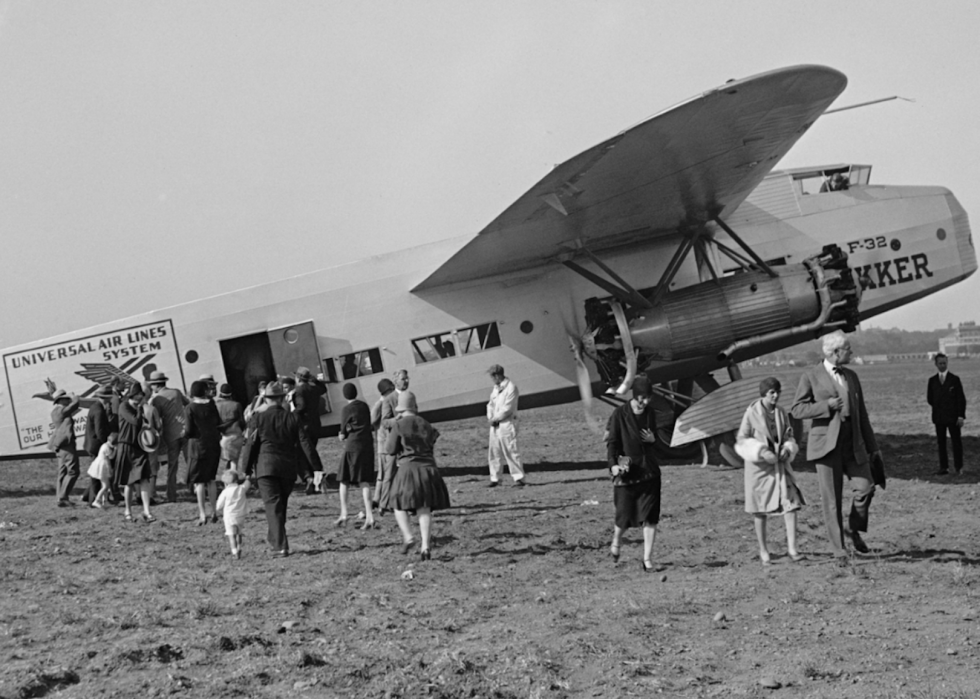
16 / 25
Herbert A. French/Library of Congress // Wikimedia Commons
Taking to the skies
Before the 1920s, aviation was thought of equally a niche—or war machine—pursuit. Only during the decade, public fascination with airplanes was piqued by American aviators like Charles Lindbergh and Amelia Earhart, who became the first airplane pilot to wing over the Atlantic Sea (in 1927) and the kickoff pilot to wing from Hawaii to the U.S. mainland (in 1935), respectively. Commercial air travel proceeded rapidly; in 1926, in that location were fewer than 6,000 commercial air travelers in the United states, simply by 1929, there were roughly 173,000.
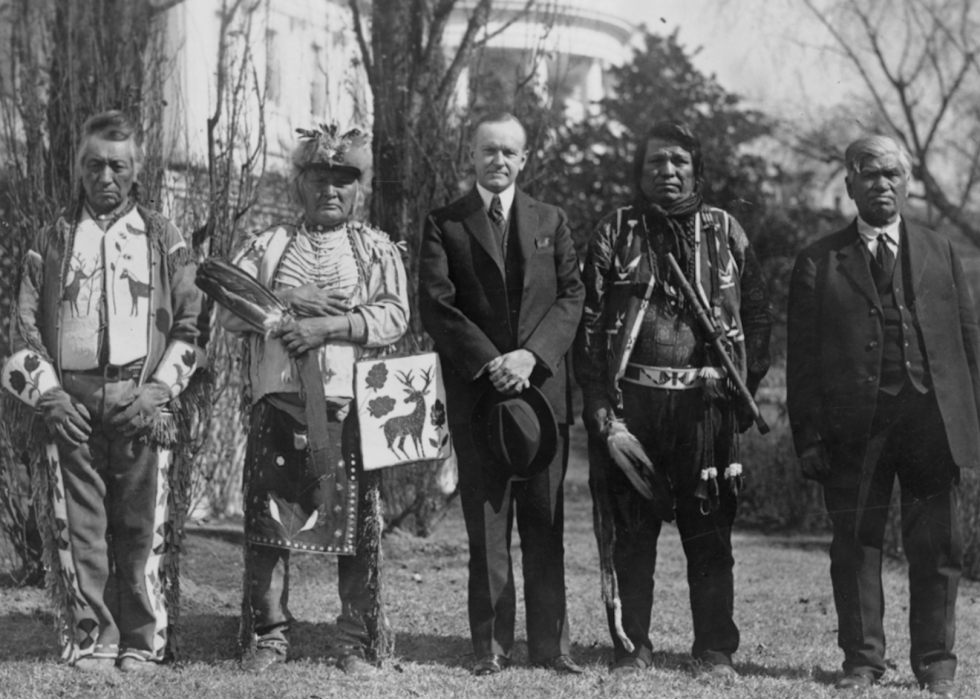
17 / 25
National Photo Company Collection // Library of Congress
Citizenship for Native Americans
It had been decades since the conquest of virtually Native American country by white settlers and pioneers, merely Native Americans themselves had not been granted universal citizenship. Although Native American women married to citizens, those with half-American blood, and veterans (after World State of war I) were granted citizenship, the classification of all Native Americans as American citizens did non happen until the 1924 Indian Citizenship Human activity.
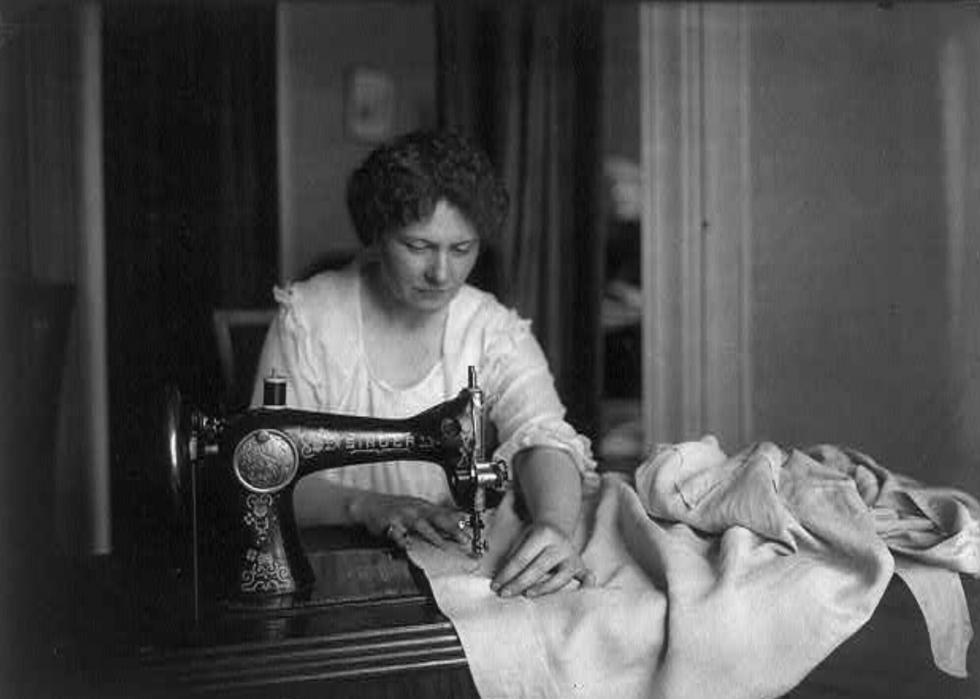
18 / 25
Bain Drove // Wikimedia Commons
The sewing machines enters the home
Seamstresses and clothes makers before the 1920s largely worked by hand, and later on past a large electric sewing machine, making it difficult for most people to make their own clothes. The introduction of the first portable electric sewing machine in the 1920s changed all of this. Now, ordinary American families could take sewing machines in their homes, giving rising to a whole new way for everyday Americans to clothing what they liked: If they couldn't afford information technology or discover it in a shop, they could make an article of article of clothing for themselves.
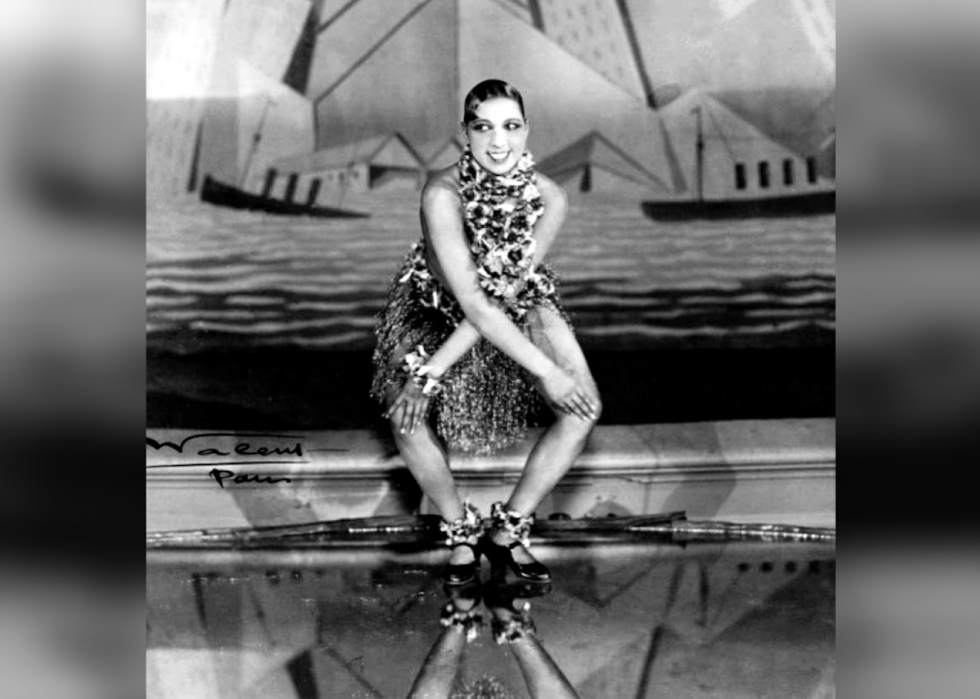
19 / 25
Walery // Wikimedia Commons
Free to dance alone
Before the 1920s, most types of dances required a partner, or for dancers to know elaborate steps. Hot on the heels of the jazz explosion, which was all about improvising, new styles of dance transformed the way Americans let loose. Types of trip the light fantastic such as the Charleston encouraged dancers to be free and loose with their bodies, allowing self-expression to slip in to leisure activities.
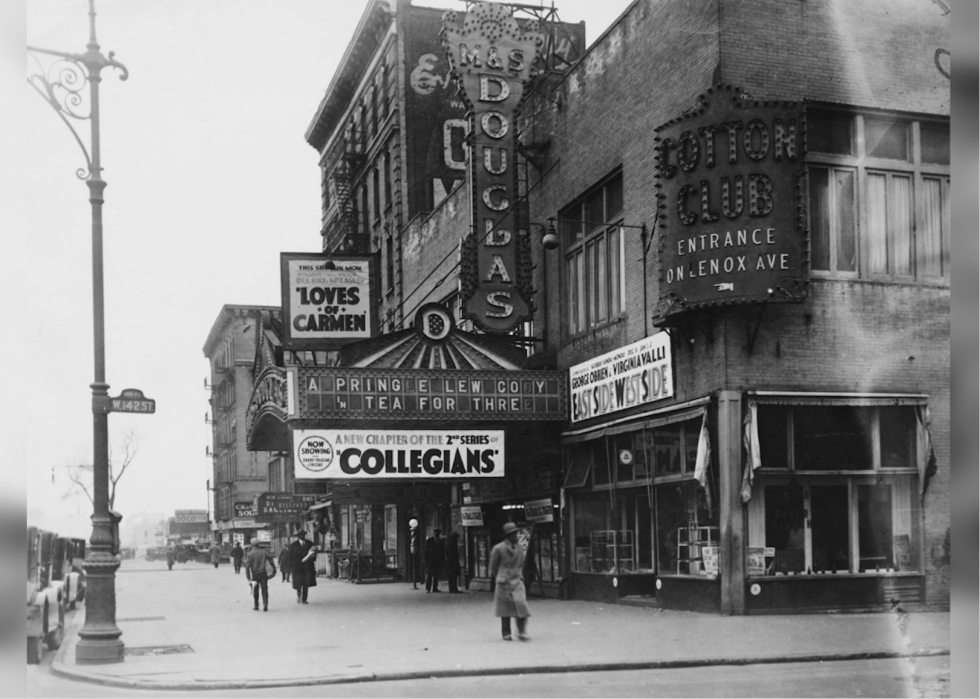
xx / 25
Hulton Annal // Getty Images
The rise of the nightclub
The 1920s saw the rise of the nightclub equally a forum for entertainment, every bit the state modernized in the wake of the World War I. Stodgy Victorian dinner parties and cartoon rooms manned by servants were giving style to an easier and more exciting form of entertainment at nightclubs, with music, dancing, the run a risk to meet new people, and in some establishments, illegal booze. Nightclubs have been popular ever since.
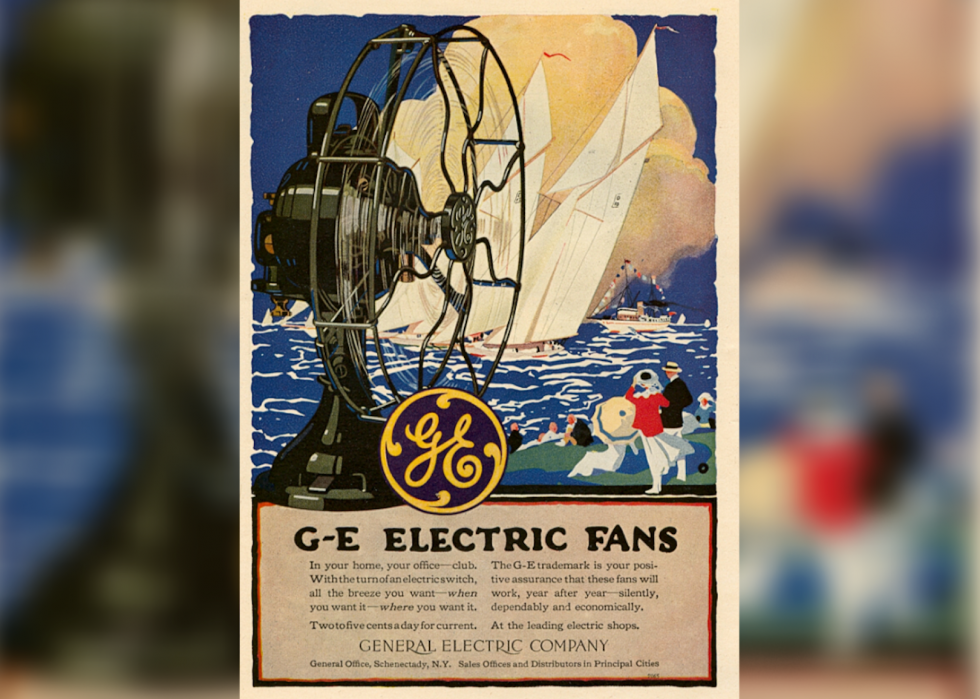
21 / 25
General Electric/Marxchivist // Flickr
Relief from electric fans
For decades, those who lived in warm and muggy southern climates had little to do in the hottest summer months just fan themselves equally much as possible or rely on rotator fans to try and proceed cool. But when General Electric made an electric fan with quiet overlapping blades in the 1920s, people were suddenly able to stay cooler even in the warmest of temperatures.
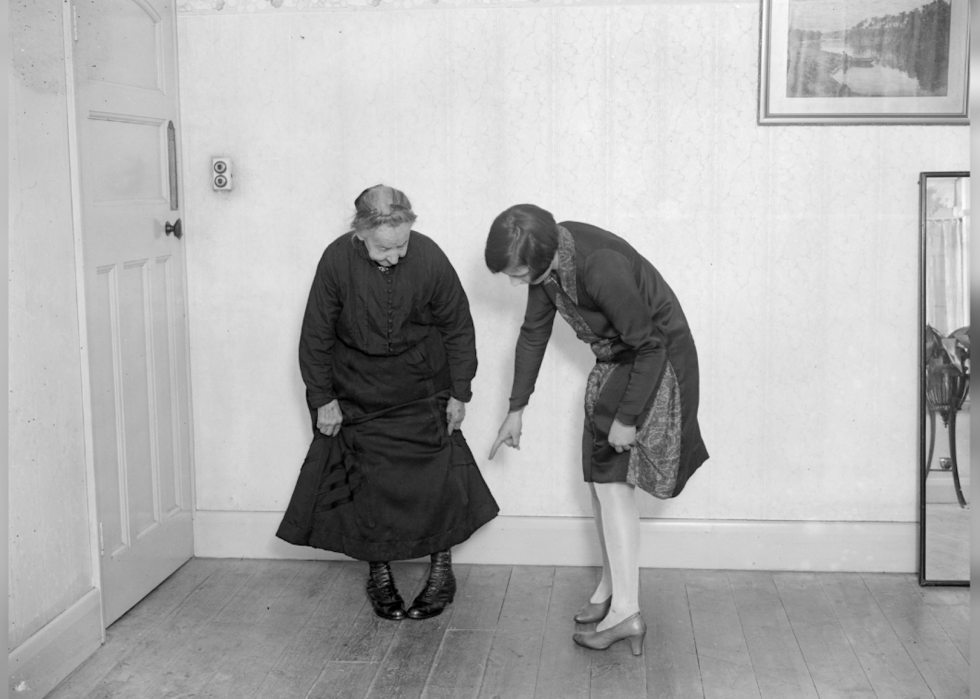
22 / 25
Fob Photos // Getty Images
Hemlines up
Along with a change in hair length, brim and dress length also changed considerably for women in the 1920s. While floor- or talocrural joint-length hems were considered the only acceptable ones earlier the 1920s, the decade saw the sudden and shocking cropping of hemlines to the knee or above. The liberation of women's legs reflected the greater freedom they found in their lives, as they kept jobs they had gotten during WWI, won the correct to vote, and yes, cut their hair.
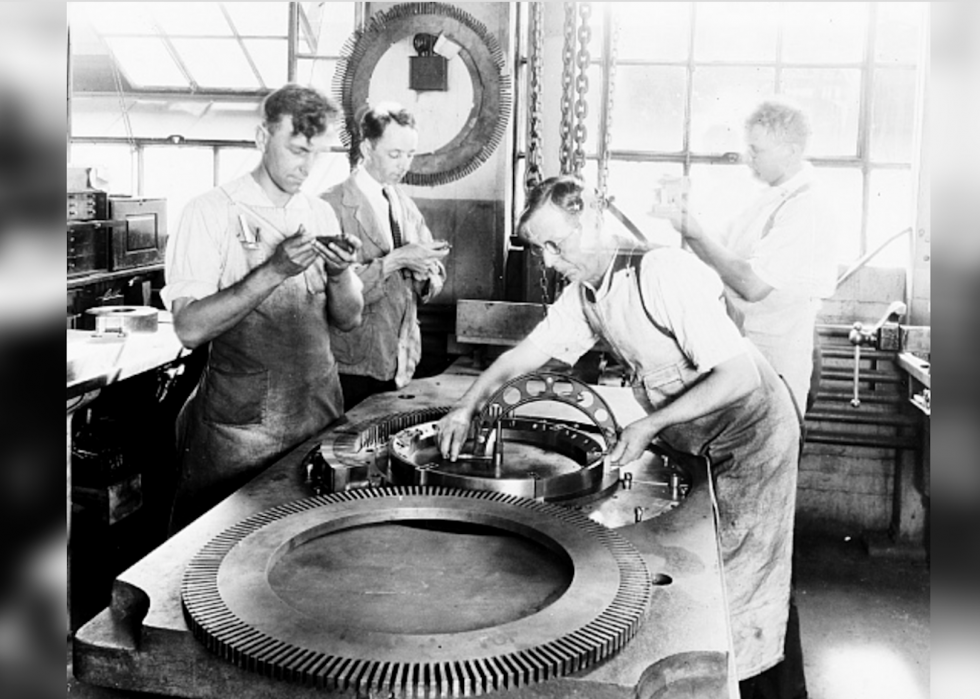
23 / 25
Detroit Publishing Visitor // Library of Congress
The refuse of unions
A radical new form of corporation took concur in the early 1920s, giving rise to a drop in the number of Americans who participated in unions. Led by Ford Motor Co., some companies decided to voluntarily improve working conditions, pay higher wages, set up strict work time limits, and offer health insurance and other benefits. Equally a result, there were 2 one thousand thousand fewer Americans who were enrolled in a union in 1929 equally there were in 1920.
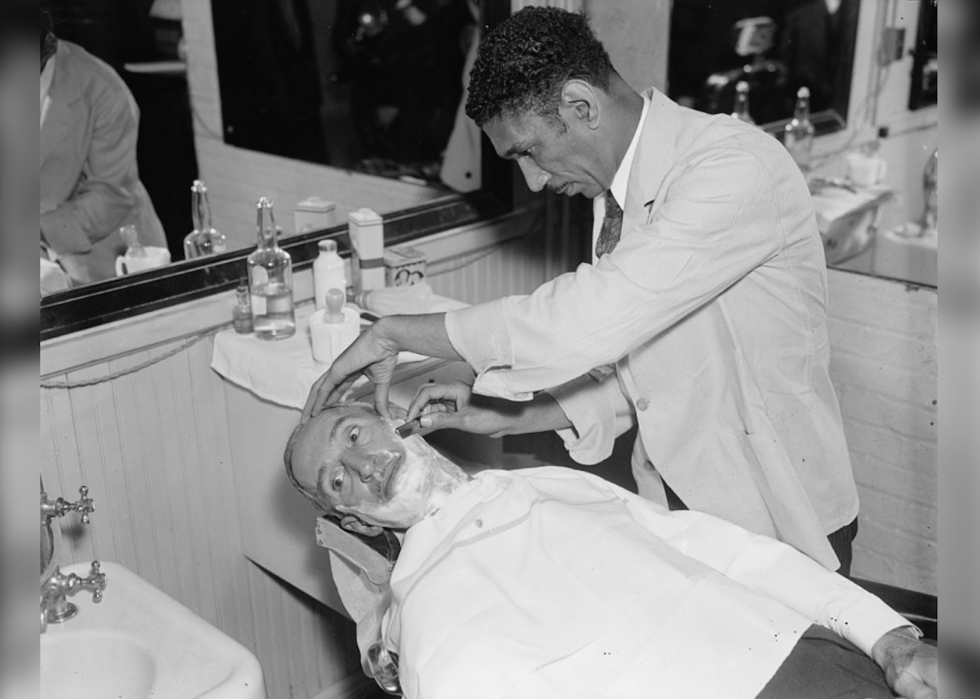
24 / 25
Harris & Ewing // Library of Congress
The reject of the beard
Women weren't the only ones whose human relationship with their hair inverse in the 1920s. Men, too, wanted less pilus, although the kind they were interested in losing was on their faces. The popularity of beards and moustaches plummeted in the 1920s, thanks to an obsession with health, youth, and cleanliness—giving facial hair a stigma that it must be hiding something, like scars from an one-time smallpox outbreak. If men did have facial pilus, information technology was more likely to exist a sparse moustache.
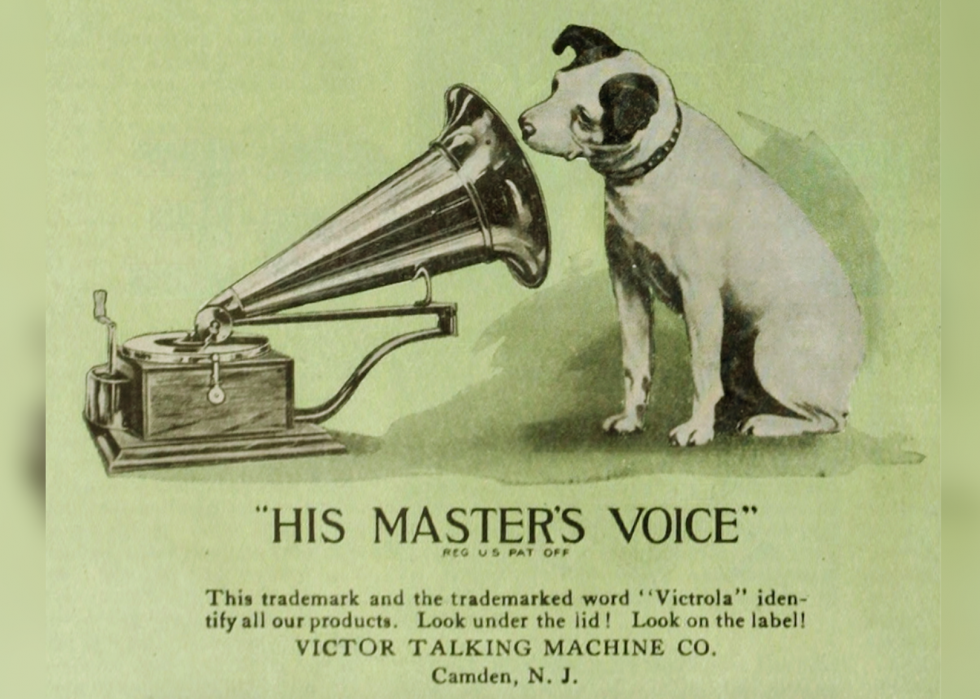
25 / 25
Victor Talking Machine Visitor // Wikimedia Commons
Advertising transforms American finances
Advertising had been put to the exam with cracking effectiveness in the WWI, helping sell Americans on the idea of the state of war so getting them to enlist. In peacetime, advertizing executives went to work on the American bag, creating a new religion in the course of consumerism, which was formalized in i of the most scandalous books of the decade, 1925's "The Man Nobody Knows," that compared Jesus Christ to an advertising executive.
Trending Now
© Stacker 2022. All rights reserved.
How Did America's Expanding Consumer Culture Change Women's Lives,
Source: https://stacker.com/stories/3350/25-ways-american-life-dramatically-changed-during-roaring-20s
Posted by: wellsimeting82.blogspot.com


0 Response to "How Did America's Expanding Consumer Culture Change Women's Lives"
Post a Comment